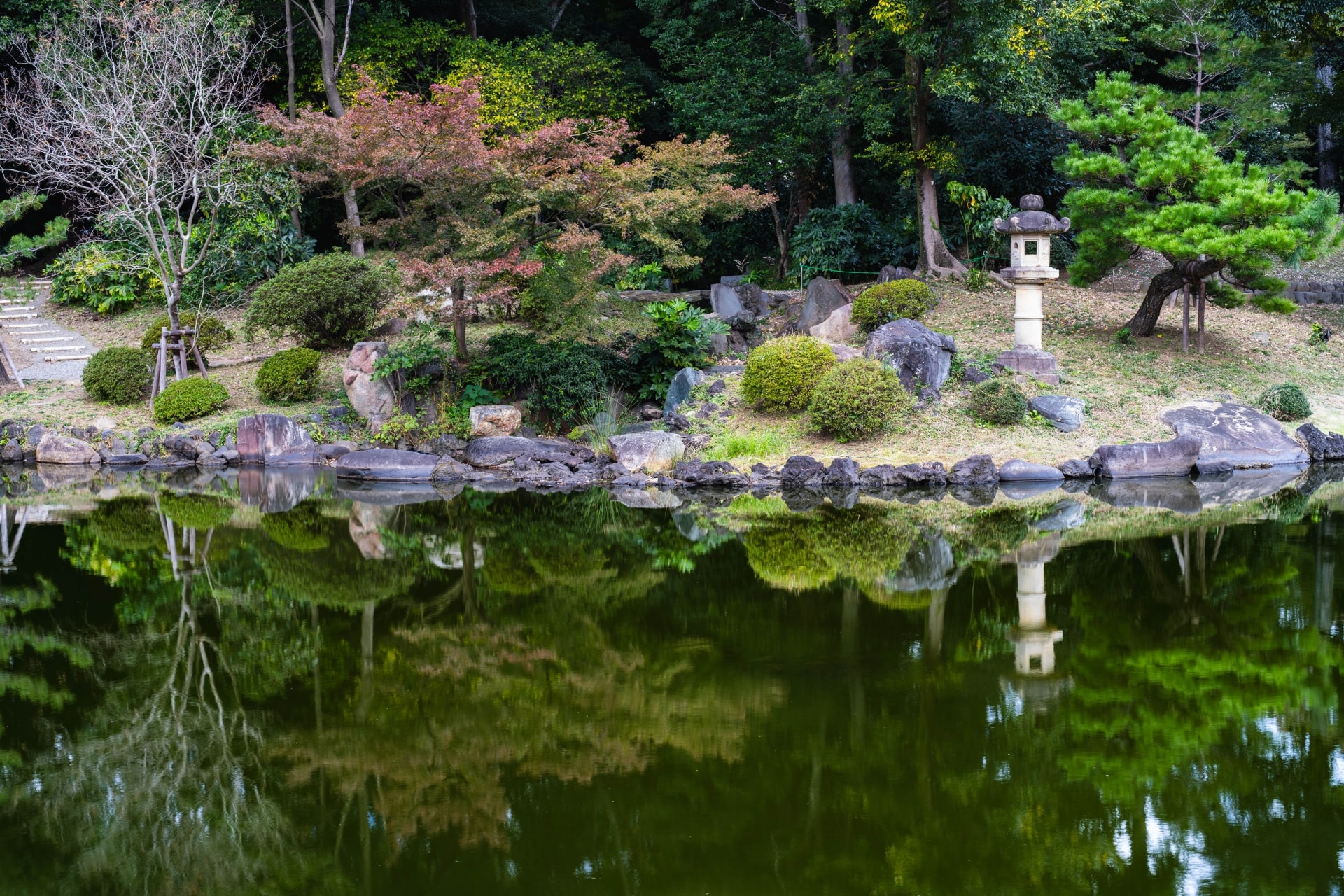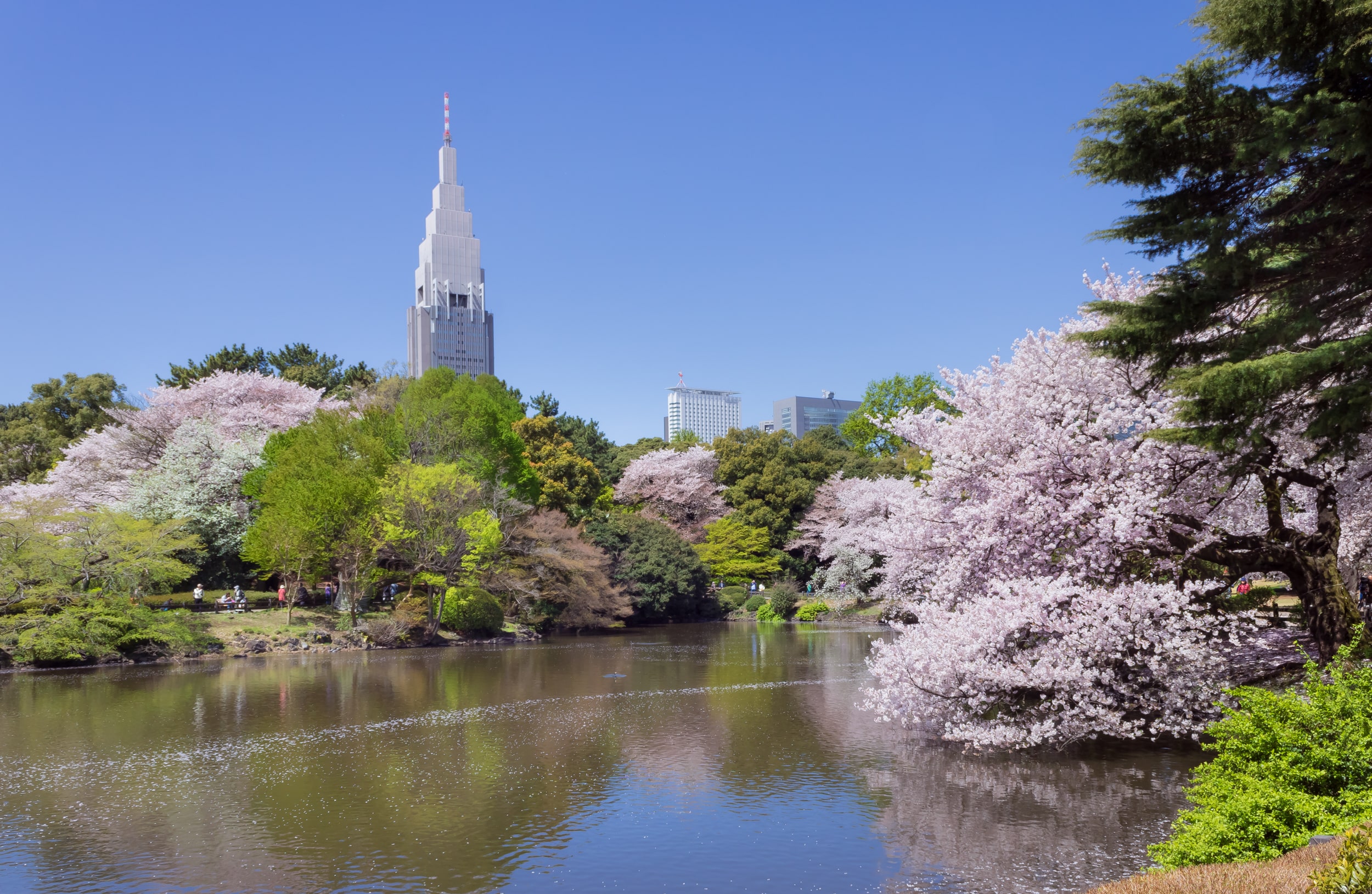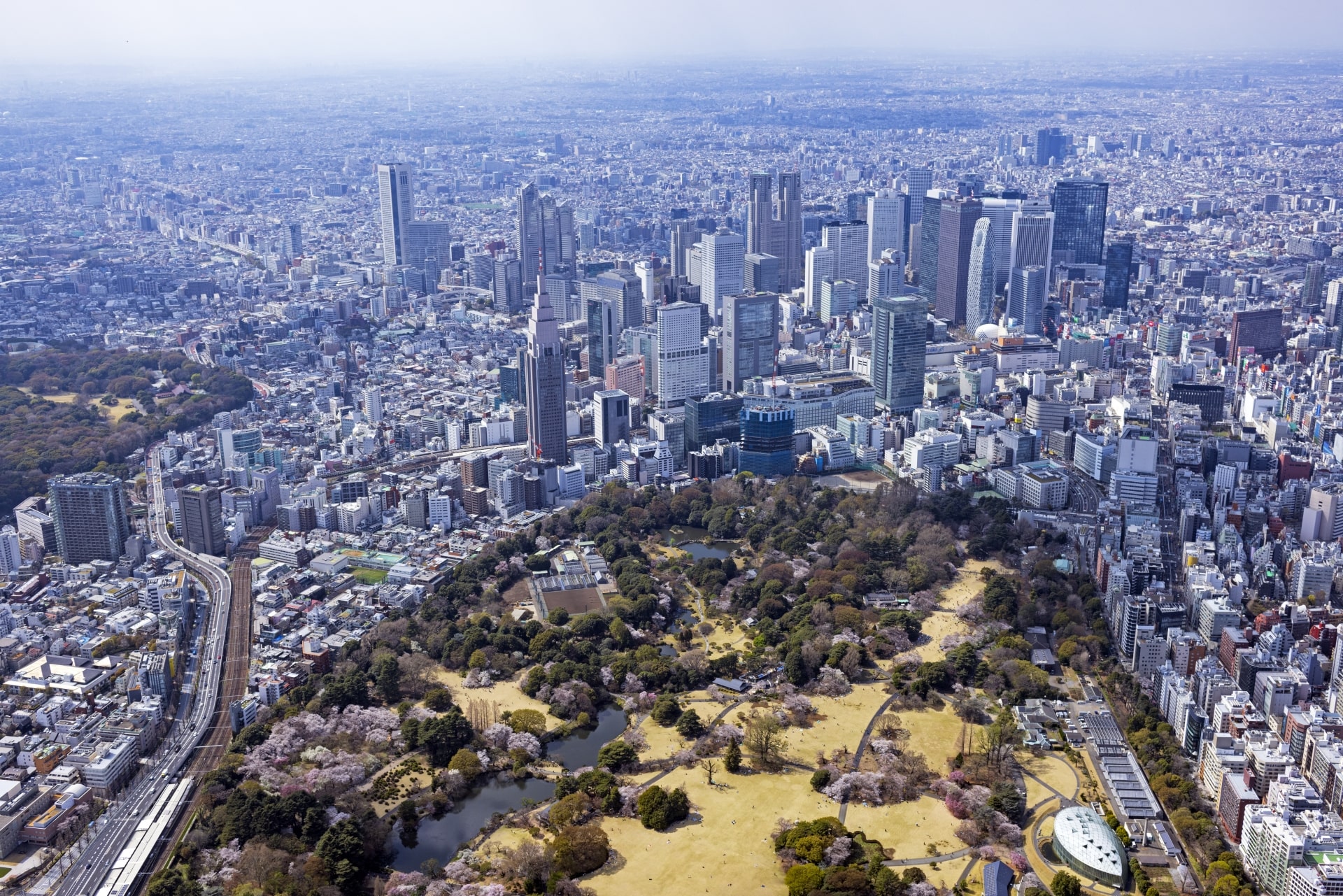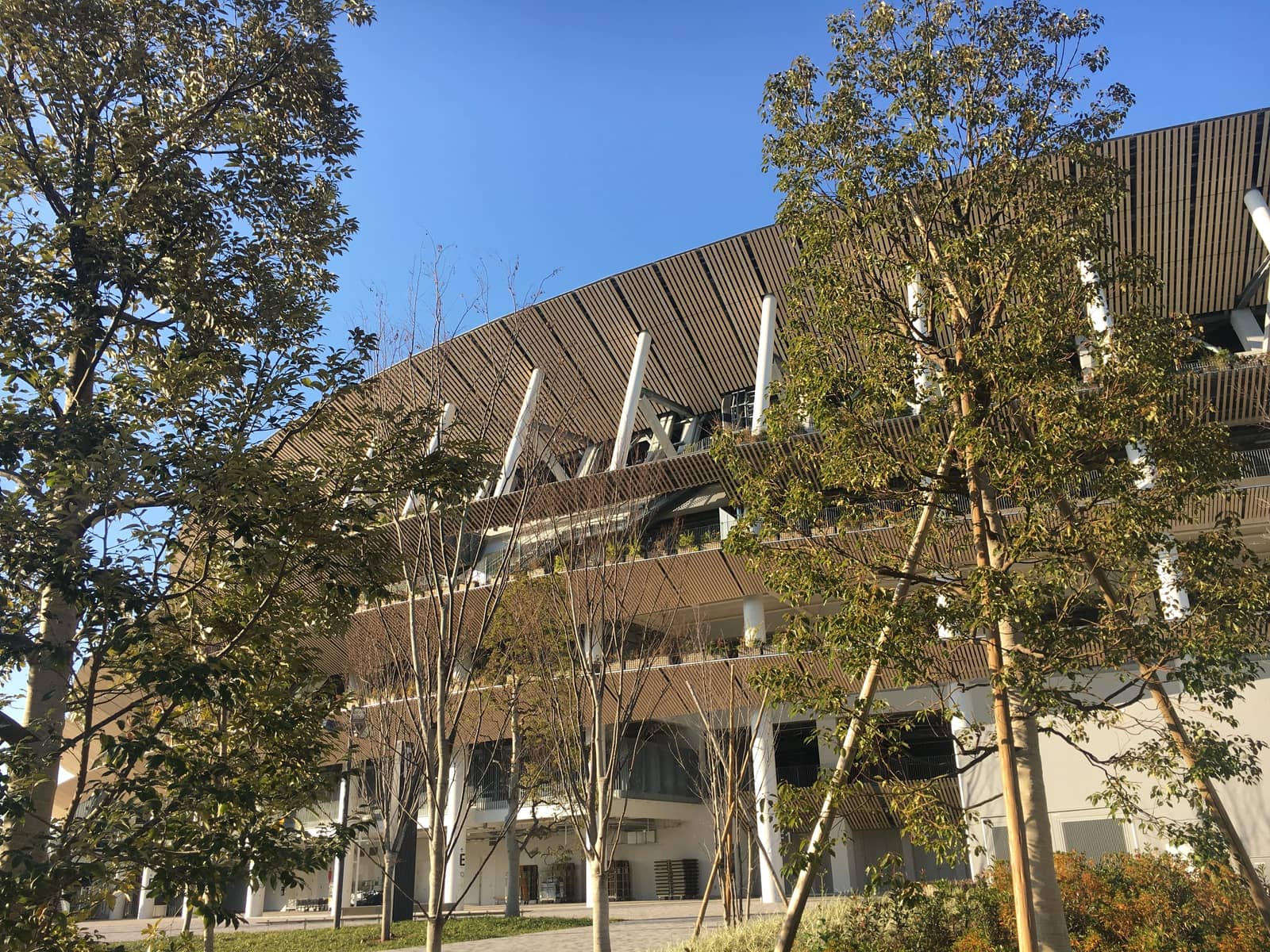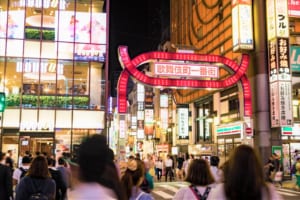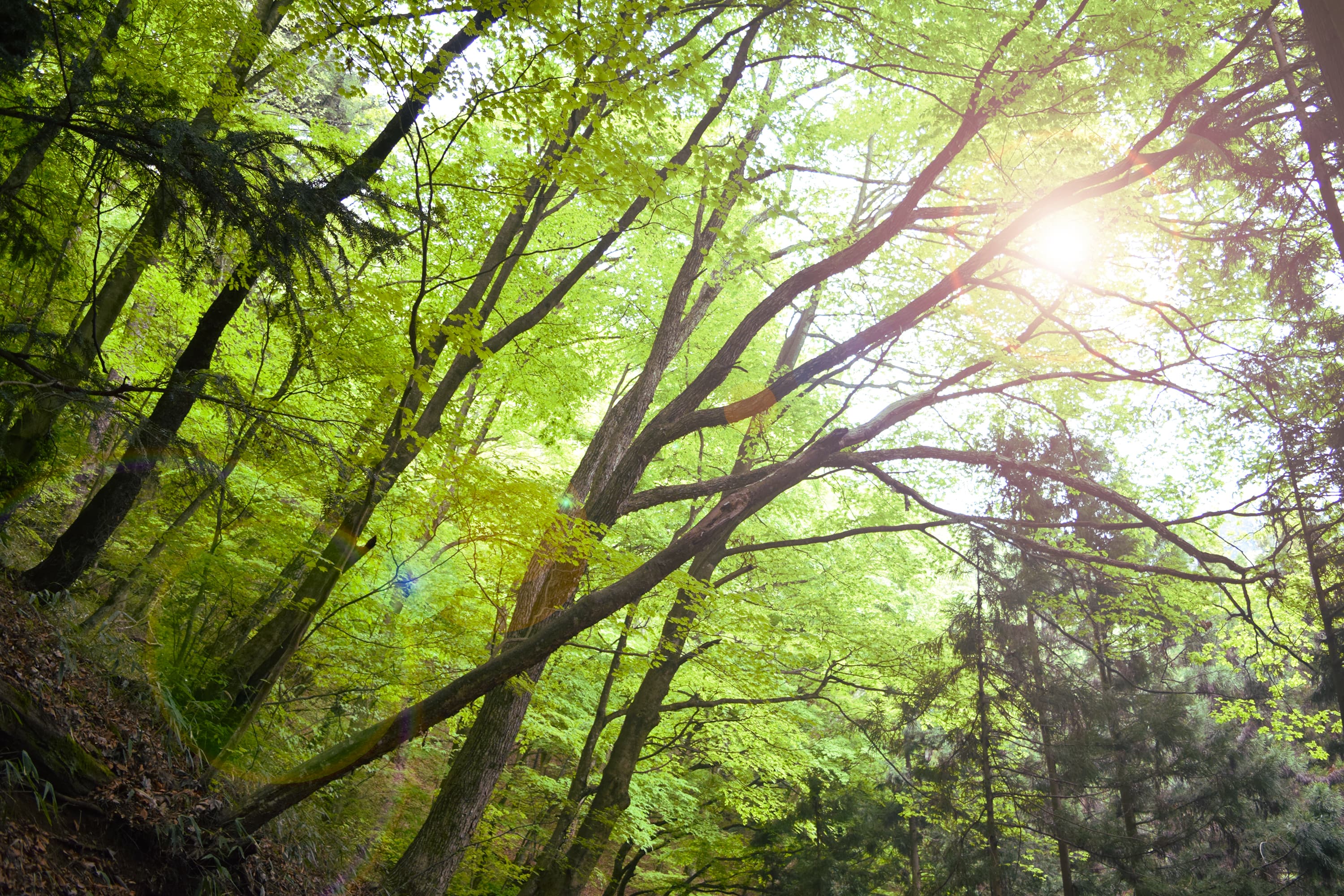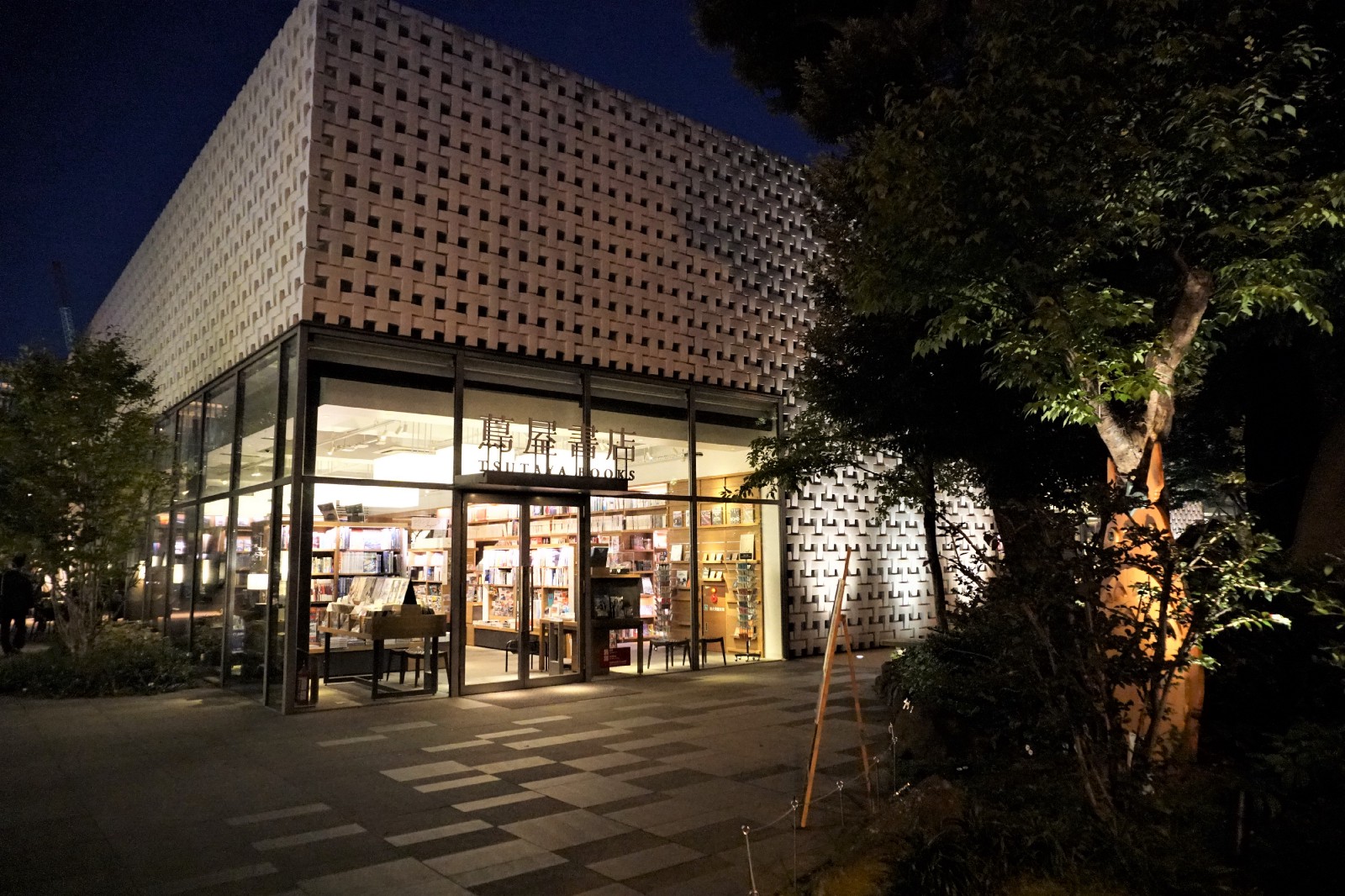Shinjuku Gyoen: the National Garden and Park in Tokyo
Travel to the Tokyo’s best garden and park Shinjuku Gyoen
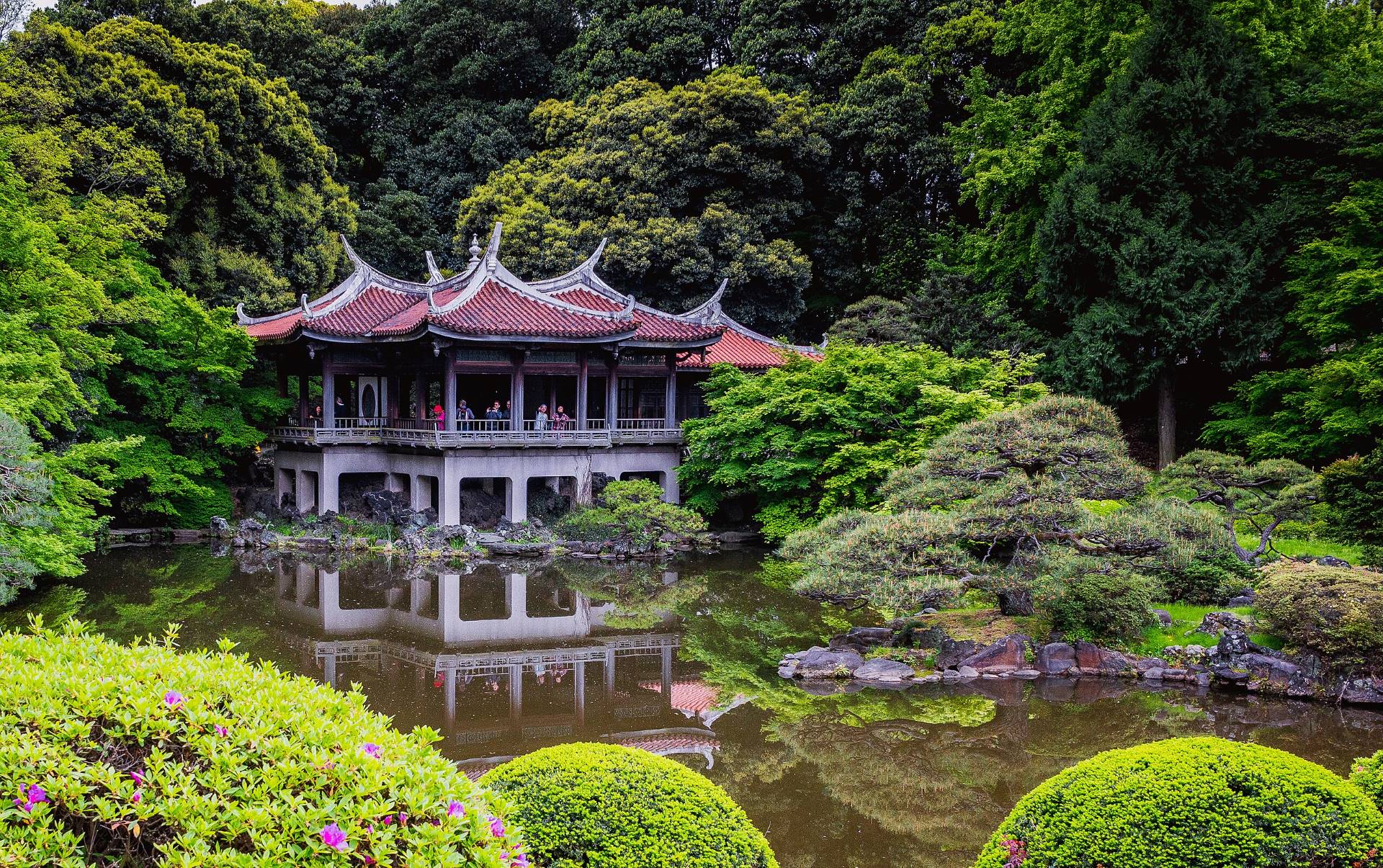
Shinjuku Gyoen is one of Tokyo’s most popular green jewels in the city’s lively energy. With a rich history dating back to feudal times, this expansive park integrates three distinct garden styles: the traditional Japanese garden, the wide-open English landscape garden, and the geometrically precise French garden. Visitors are drawn not only to its beautifully maintained grounds and seasonal blooms—from early cherry blossoms to vibrant autumn foliage—but also to the park’s well-preserved historical features that hint at its aristocratic past.
Amid the constant hum of city life, Shinjuku Gyoen provides a refreshing pause, inviting you to explore winding paths, admire carefully curated flora, and unwind in a setting that marries nature with culture. With features like tranquil tea houses to picturesque ponds reflecting cherry blossoms, this park delivers an enriching and accessible escape, ensuring it remains a must-visit destination for locals and travelers alike. Experience the vibrant pulse of history and nature in every single step.
For a general overview of the Shinjuku area, don’t miss our All-in-One Guide to Shinjuku.
*Please note that this article contains affiliate links.
What is Shinjuku Gyoen?
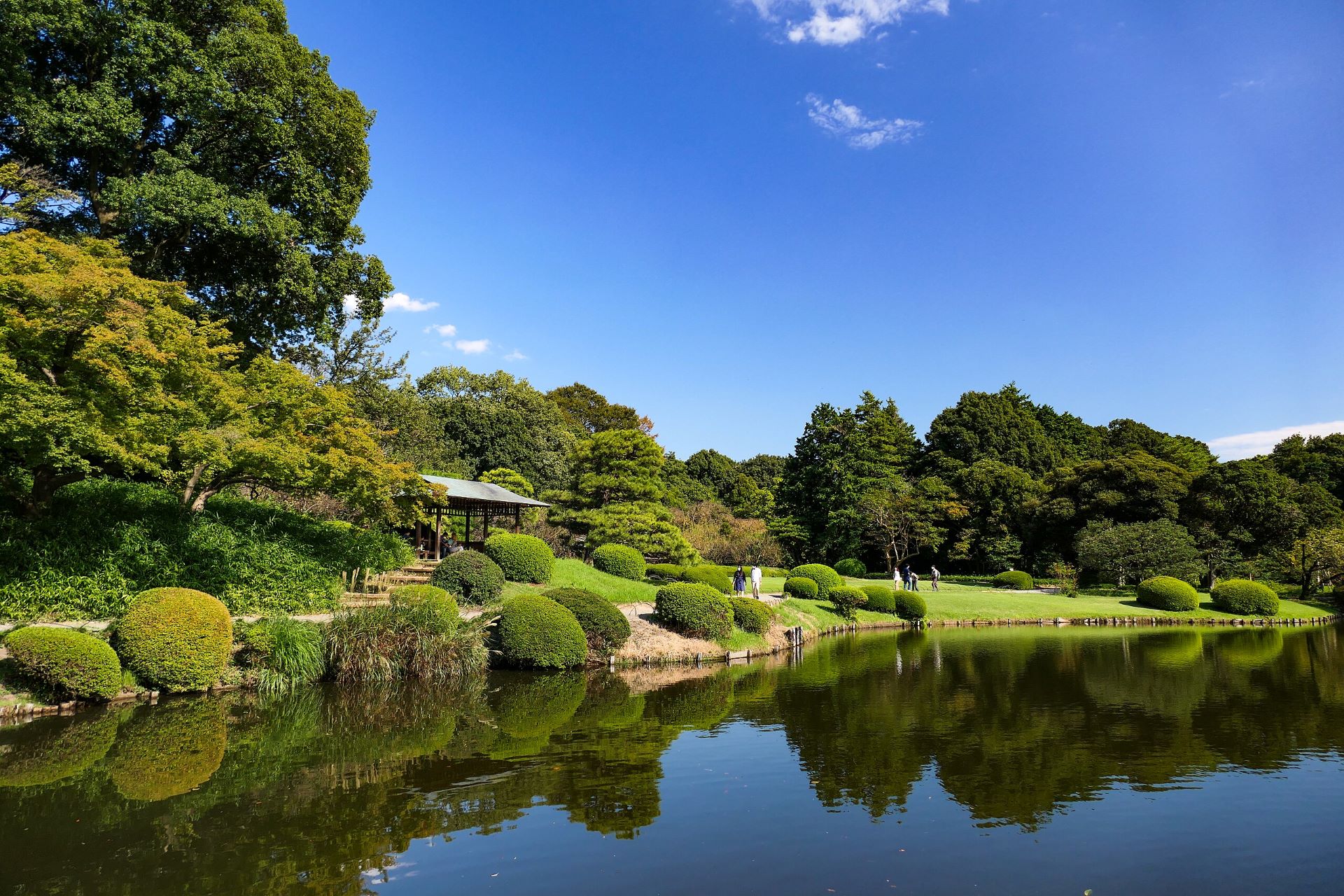
Shinjuku Gyoen (新宿御苑) is a historic park in Tokyo, Japan, with origins dating back to the Edo period (1603–1867). Initially it was founded in 1772 and served as the private residence of the Naito family, feudal lords of that era. In 1872, following the Meiji Restoration, the estate was transformed into the Naito Shinjuku Experimental Station, an agricultural research facility. By 1879, it had evolved into the Shinjuku Imperial Botanical Garden.
In 1906, under the direction of Emperor Meiji, the garden was redesigned and opened as the Shinjuku Imperial Garden, serving as a venue for imperial ceremonies and the entertainment of guests. The garden suffered extensive damage during World War II but was restored and reopened to the public in 1949 as Shinjuku Gyoen National Garden. Today, it stands as a symbol of Japan’s rich history and cultural heritage.
Garden Types in Shinjuku Gyoen
Shinjuku Gyoen presents three distinct garden styles that highlight both Japanese tradition and Western influences, offering visitors a diverse experience in one location.
Japanese Traditional Garden
Within Shinjuku Gyoen, the Japanese Traditional Garden offers a serene retreat that captures the essence of classic Japanese aesthetics. Winding stone paths guide visitors along carefully arranged, slowly flowing ponds and past traditional tea houses, creating an atmosphere of quiet reflection.
This garden area is especially treasured for its historical structures, most notably Kyugoryotei (旧御凉亭), also known as the Taiwan Pavilion.

It was built originally to commemorate the marriage of Emperor Showa thanks to donations from Japanese nationals living in Taiwan at the time. Most of its materials were imported from Taiwan, and it’s one of the few examples of genuine Chinese architecture in Japan.
As the seasons change, the garden comes alive with the delicate pink of cherry blossoms and the vibrant hues of Japanese plums in spring, while autumn brings the bright reds of tinted maple leaves.
English Landscape Garden
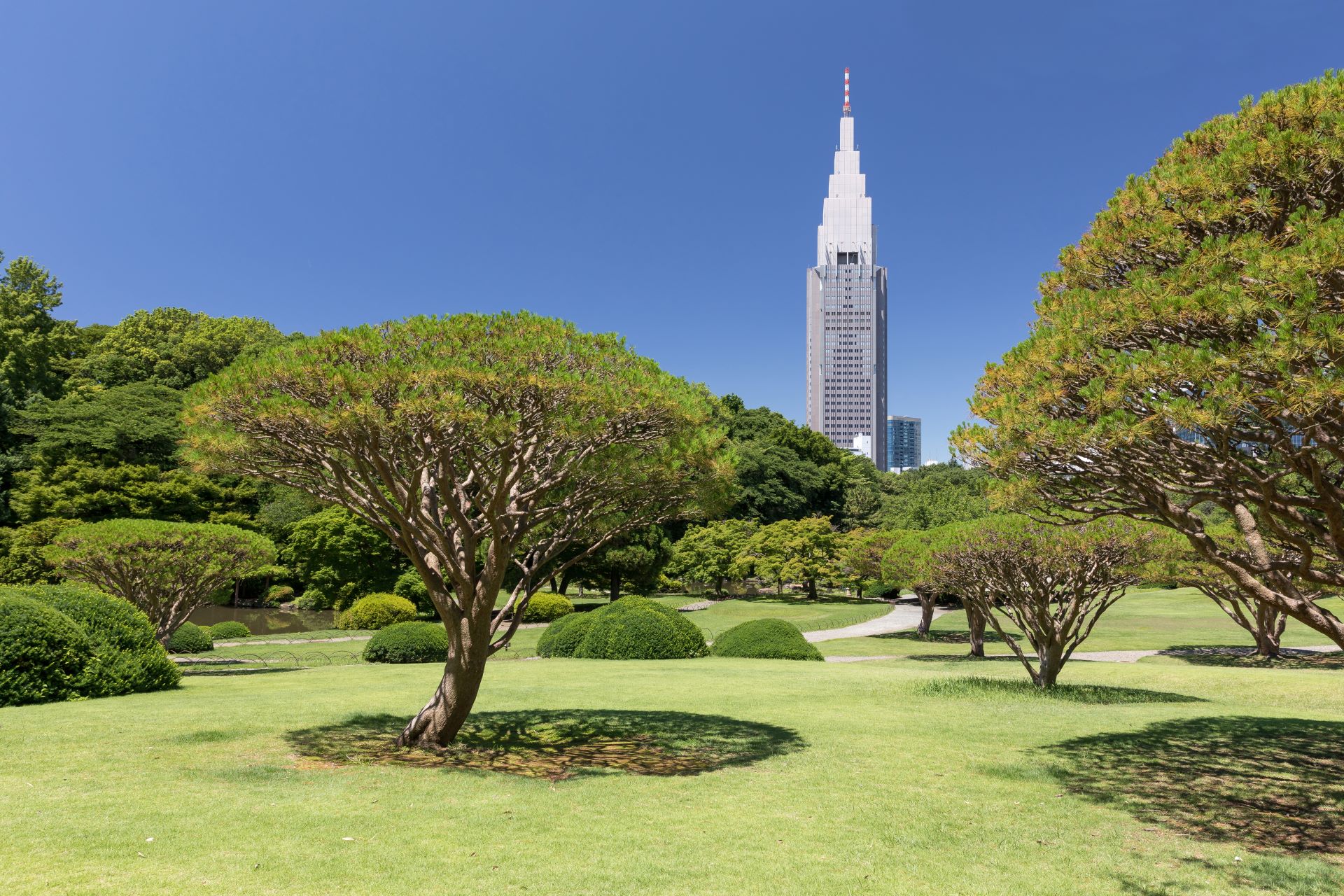
The English Landscape Garden offers expansive lawns and gentle, meandering paths reminiscent of the country parks of England. This section provides a striking contrast with its broad open spaces, attracting many visitors and allowing them the possibility of enjoying a relaxing picnic, a leisurely stroll, or just to lay down and take in views of Tokyo’s urban skyline, including the famous Docomo Tower beyond the park.
Its maintained hedges and naturalistic layout foster a feeling of openness and freedom. The landscape pf the garden looks like New York City’s Central Park and Shinjuku Gyoen National Garden is also known as Tokyo’s Central Park.
French Formal Garden
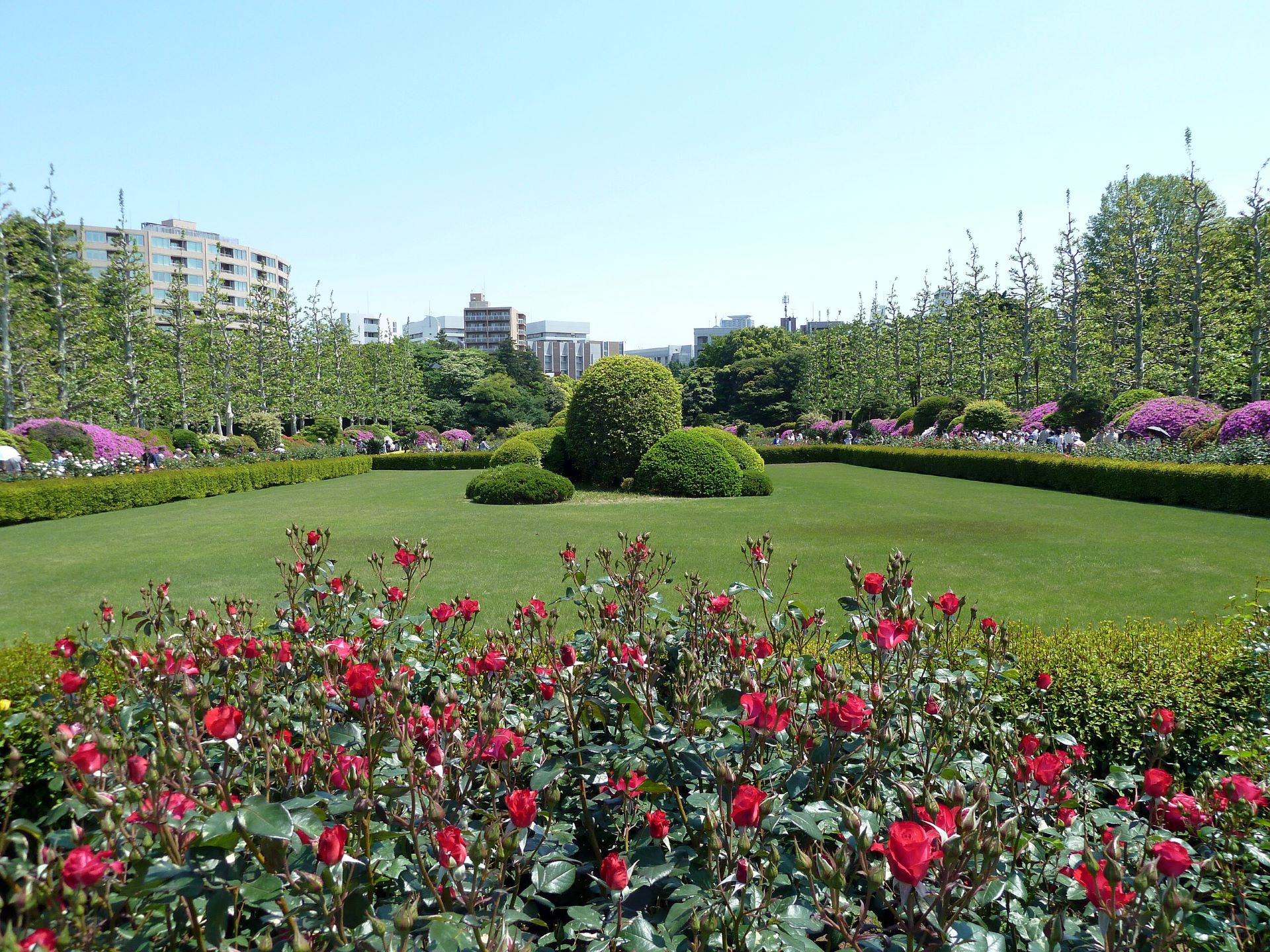
The French Formal Garden is marked by its precise geometric layout, featuring symmetrical flower beds, neatly trimmed hedges, and decorative water features. Reflecting European influences, its structured design creates a sense of order and elegance. A central display of meticulously arranged roses and other seasonal blooms serves as the focal point, showcasing careful planning and attention to detail.
The third face of Shinjuku Gyoen National Garden is French Formal Garden which is beautifully designed in a symmetric way. A bed of flowers including about 500 roses is centered at the garden, and over 150 plane trees stands along the both sides of the flowerbed.
Shinjuku Gyoen Facilities
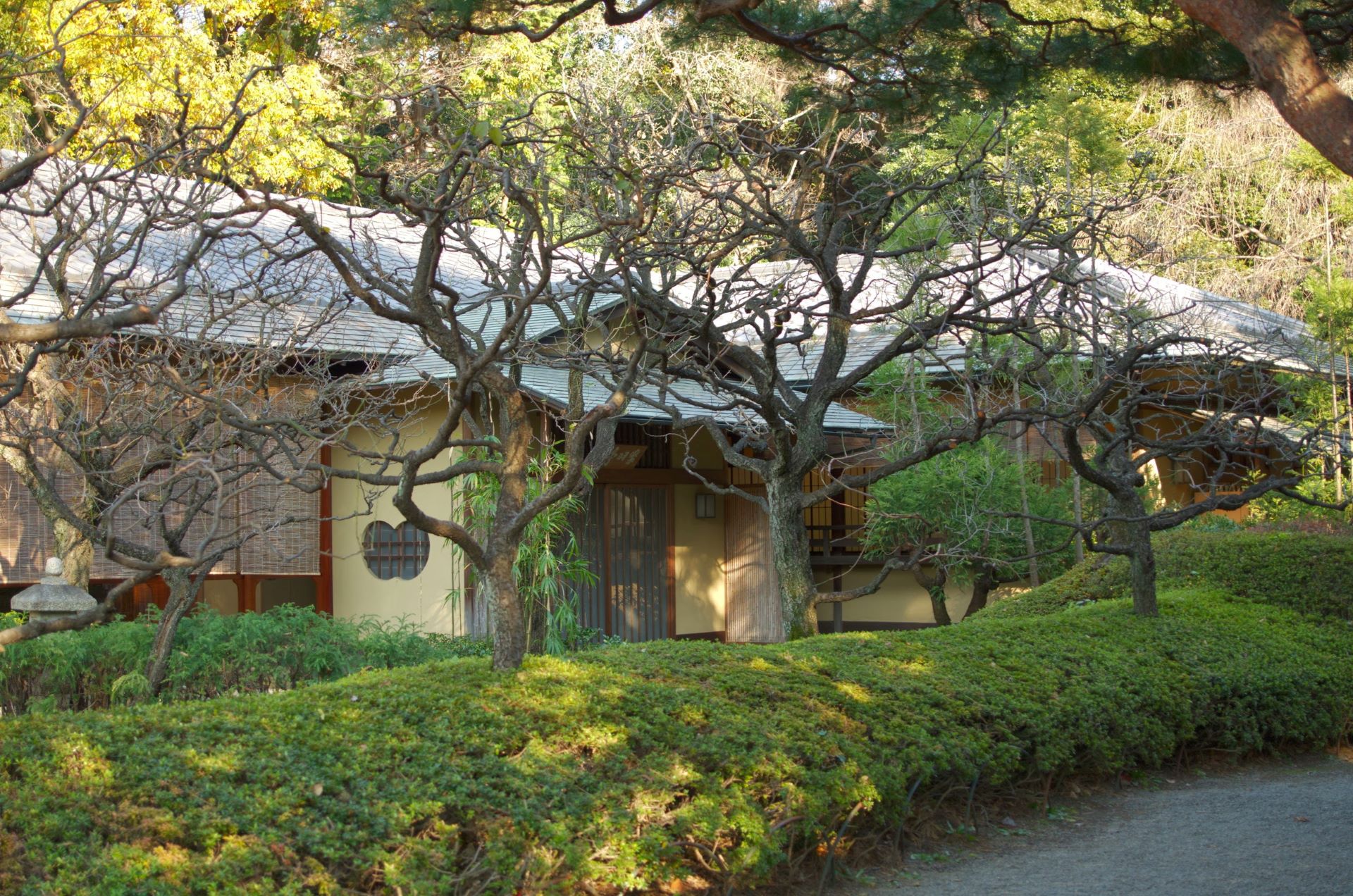
Shinjuku Gyoen offers a wide range of facilities designed to enhance your visit. Key features include:
-
Historical Tea House:
Rakuutei (楽羽亭) is a traditional Teahouse where you can enjoy tea ceremonies and experience Japanese cultural practices. -
Modern Cafés and Restaurants:
Contemporary dining options, such as cafés offering light meals and specialty beverages. The Starbucks Coffee that opened in Spring 2020 is one of the most standout features among them. -
Greenhouse:
A state-of-the-art greenhouse displays a variety of exotic and seasonal plants, adding a touch of botanical wonder to your stroll.
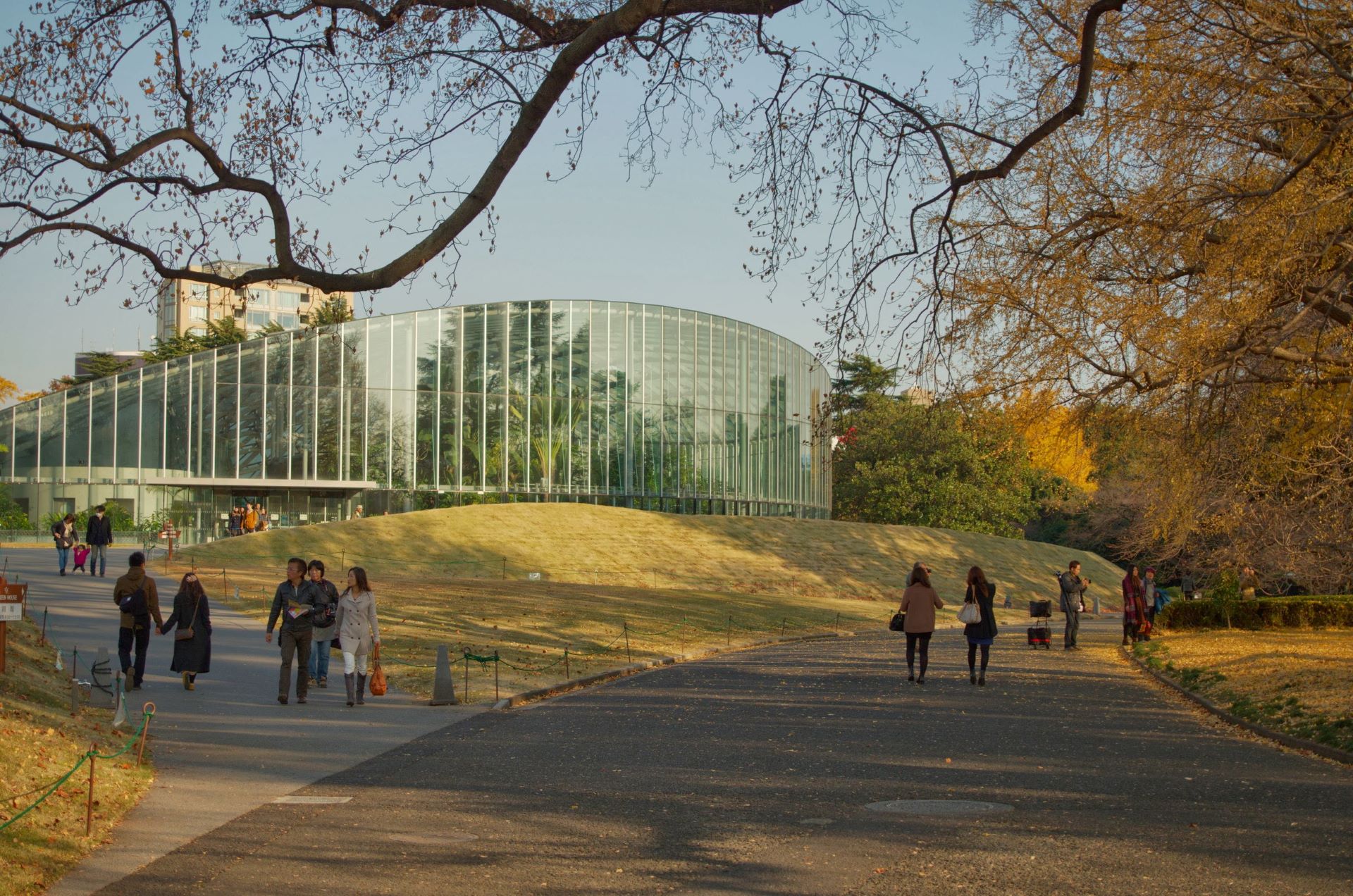
-
Information Centers:
Strategically placed centers providing maps, guidance, and up-to-date event information to help you navigate its expansive grounds. -
Rest Areas and Accessible Paths:
Well-maintained walking routes and seating areas ensure a comfortable visit for everyone, including those requiring accessible routes. -
Seasonal Events:
Regularly scheduled activities, including cherry blossom festivals and autumn foliage viewings, adding to the park’s allure.
Practical Visitor Tips
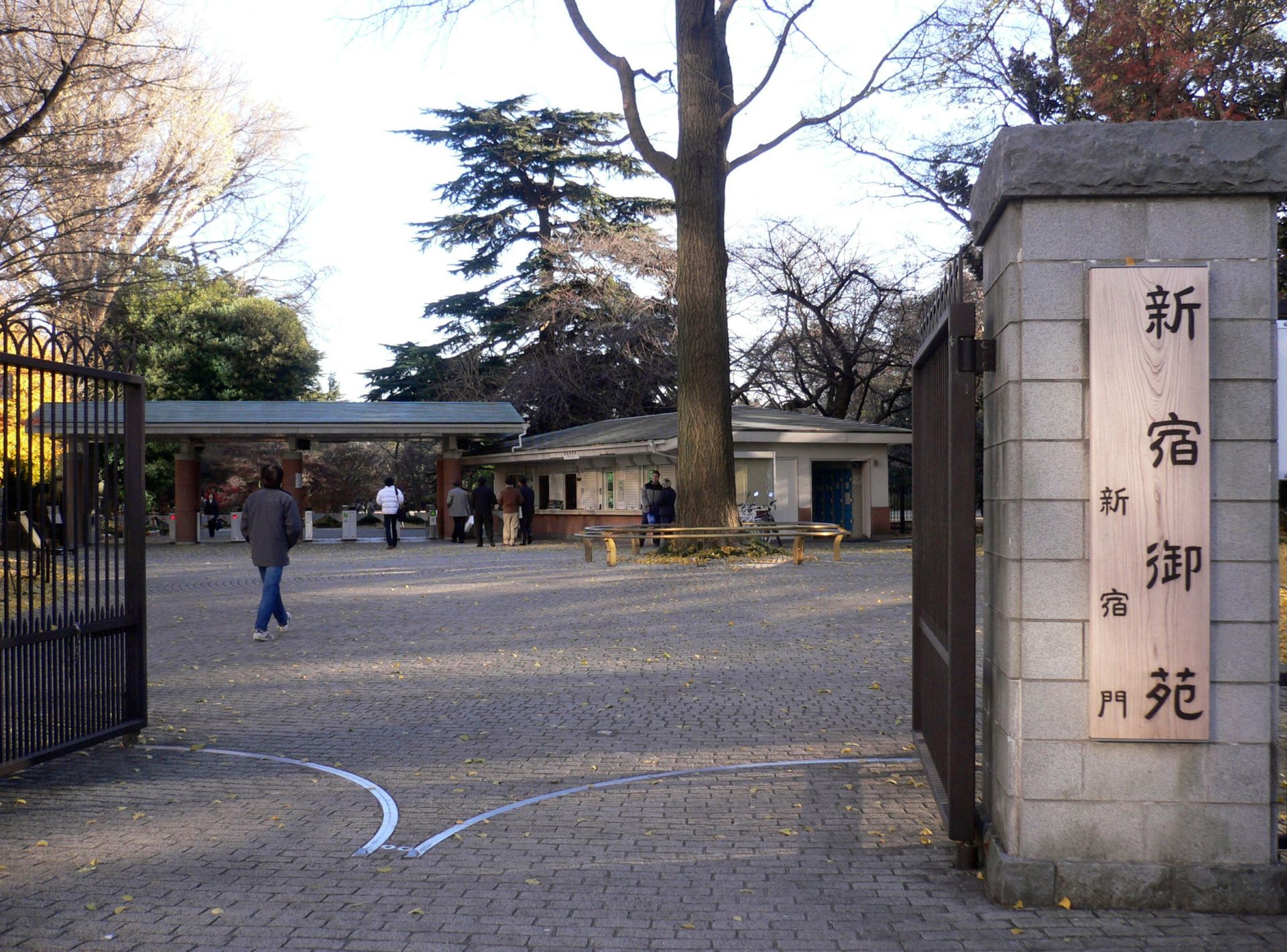
To ensure a smooth and enjoyable visit, follow these tips:
Before Your Visit
-
Plan Ahead:
Check the official website for current schedules, reservation details, and any updates on events. -
Purchase Tickets in Advance:
On busy days—especially during peak cherry blossom or autumn foliage seasons—buy online tickets (e.g., via Asoview) to avoid long waiting times. -
Review Entry Options:
Consider using less crowded entrances such as the Okido Gate 大木戸門 which is also close to Shinjuku-gyoenmae Station or the Sendagaya Gate 千駄ヶ谷門 near Sendagaya Station for quicker access.
During Your Visit
-
Arrive Early:
Aim to enter between 9:00 and 10:30 when the park is less crowded and the atmosphere is more relaxed. Also, consider visiting on weekdays to avoid larger weekend crowds. -
Bring Essential Items:
Pack a map, comfortable shoes, water, and any other personal items you might need. Note that while picnicking on the grass is allowed, tents are not. -
Monitor Real-Time Updates:
Utilize tools like Google Maps’ “popular times” feature and follow official social media accounts for live crowd information.
Tourist Reviews of Shinjuku Gyoen National Garden
Shinjuku Gyoen National Garden is one of Tokyo’s most famous parks, known for its beautiful cherry blossoms, well-manicured landscapes, and tranquil atmosphere. With a Google rating of 4.6 (39,803 reviews), a TripAdvisor score of 4.6 (6,308 reviews), and a Yelp rating of 4.8 (181 reviews), it is highly praised for its beauty and peacefulness despite being located in the bustling Shinjuku area.
A TripAdvisor visitor shared their experience during cherry blossom season:
“We visited on March 30 and arrived at 2 PM, only to find that all timed advanced entries were sold out. Non-timed entries started at 4 PM, so we explored Ueno Park and returned later. The park was absolutely gorgeous, featuring cherry trees in various shades from white to deep pink. Crowded, but not as much as Ueno Park. No alcohol is allowed inside. If you’re in Tokyo for cherry blossoms, this is the best place to go by far.”
―from TripAdvisor
A Yelp reviewer appreciated the garden’s size and peacefulness:
“The park is beautifully maintained, with lush grass, pruned trees, and diverse plant life. It’s so big we couldn’t walk through the entire thing! Different sections highlight different types of plants, and there’s even a Starbucks with a stunning glass window overlooking the water. The park is very zen and quiet, making it a perfect escape from the city.”
―from Yelp
Getting to Shinjuku Gyoen
Shinjuku Gyoen National Garden is accessible via multiple public transportation options. The park features three main gates: Shinjuku Gate, Okido Gate, and Sendagaya Gate.
Access to Shinjuku Gate
-
JR Lines (Shinjuku Station): A 10-minute walk from the “South Exit” of JR Shinjuku Station.
-
Seibu Shinjuku Line (Seibu-Shinjuku Station): Approximately a 15-minute walk.
-
Fukutoshin Line (Shinjuku-sanchome Station): A 5-minute walk from exits C1, C5, or E5.
-
Marunouchi Line (Shinjuku-gyoemmae Station): A 5-minute walk from Exit 1.
Access to Okido Gate
-
Marunouchi Line (Shinjuku-gyoemmae Station): A 5-minute walk from Exit 2.
Access to Sendagaya Gate
-
JR Sobu Line (Sendagaya Station): A 5-minute walk.
-
Toei Oedo Line (Kokuritsu-kyogijo Station): A 5-minute walk from Exit A5.
 Business Hours Business Hours |
9:00 to 17:30 |
|---|---|
 Official Website Official Website |
https://www.env.go.jp/garden/shinjukugyoen/index.html |
Tourist Attractions Near Shinjuku Gyoen
Shinjuku Gyoen’s central location offers convenient access to several notable attractions. Here are some nearby sites worth exploring:
1. Meiji Jingu
Meiji Jingu is a Shinto shrine dedicated to Emperor Meiji and Empress Shoken. Established in 1920, it is set within a 70-hectare forested area, providing a tranquil environment that contrasts with the surrounding cityscape. Visitors can experience traditional Japanese culture and enjoy peaceful walks along its serene pathways.
More info: Meiji Jingu: Most Popular Landmark in Harajuku
2. Kabukicho
Kabukicho, located in east Shinjuku, is Tokyo’s most renowned entertainment and red-light district. Known as the “Sleepless Town,” it offers a vibrant nightlife scene with numerous restaurants, bars, and entertainment venues. The district’s neon-lit streets are bustling with activity, making it a fascinating area to explore after dark.
More info: Kabukicho: Tokyo’s Red Light District, a Survival Guide
3. Japan National Stadium
The Japan National Stadium, completed in 2019, served as the main venue for the Tokyo 2020 Olympic and Paralympic Games. Designed by architect Kengo Kuma, the stadium features a distinctive wooden lattice framework that harmonizes with its surroundings. Today, it hosts various sports events, including athletics, football, and rugby, as well as cultural events.
More info: Olympic Stadium (Japan National Stadium): Main Venue for Tokyo Olympics
Wanna go directly to Shinjuku from the airport?
Airport Taxi is one of the best services for transfer to and from Narita and Haneda Airport.
Now JWM readers have a 1,000JPY discount if they book with Airport Taxi!!
Coupon Code: JWM2023
If you are looking for more info about Shinjuku, check these articles below!
Written by
Hi! I’m a writer and editor at Japan Web Magazine. Since 2017, I’ve written over 500 articles covering a wide range of Japan-related topics—must-visit travel spots, local food culture, helpful travel tips, seasonal events, anime, manga, and more. I travel all over Japan, from the snowy landscapes of Hokkaido to the tropical beaches of Okinawa. My hobbies, such as hunting for the best ramen shops and keeping up with the latest anime every season, help me share the magic of Japan with people from all over the world. Whether you're a first-time visitor or a Japan fan planning your dream trip, I want to help you experience the best of what this country has to offer. After traveling to many countries around the world, I still love Japan the most, and I continue to share information while making the most of my perspective as someone who was born and raised here. [Connect with me] ▷You can find more of my writing and follow my latest thoughts on Japan over on Medium. A bit more about me: [Traveler at heart] ▷Most unforgettable trip: Chichijima Island, a remote island that takes over 23 hours to reach by ferry from Tokyo! ▷Favorite neighborhood in Tokyo: Kagurazaka [Foodie life] ▷Obsessed with sushi and ramen ▷Proud foodie moment: Scored a seat at the legendary Sukiyabashi Jiro [Passionate otaku] ▷Favorite anime: March Comes in Like a Lion and Attack on Titan ▷Manga I live by: One Piece and Slam Dunk





